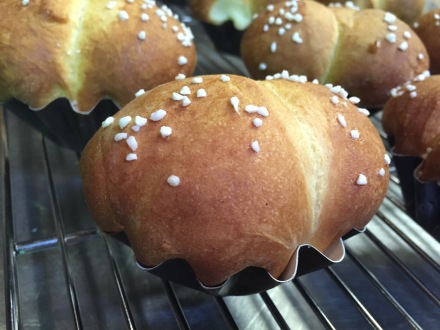
I think it was my mother who once told me that if I want to quit eating sweets, I should make them myself. She said that if I see, first hand, how much sugar and fat are in it, I will surely quite eating it. Her point was valid because I no longer consume buttercream frosting after learning how much artery-clogging butter went into making the frosting during my cupcake-making days.
Because of that reason, I was very hesitant to bake Brioche at the bread workshop at Surfas Culinary District in Culver City. I just wanted to forever stay in a sugar-coated world where I was completely oblivious to the amount of butter and eggs that were packed in those cute, seemingly innocent French pastry.
But I suppose I can’t stay sheltered forever. It was time for me to face the music. Here I go!
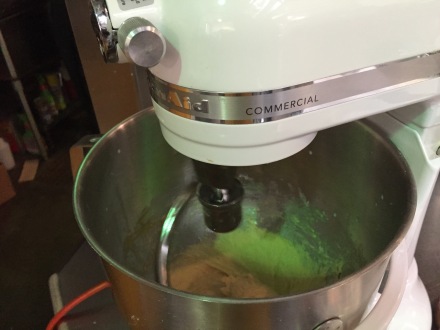
A stand mixer definitely comes in handy in making the dough. I can’t imagine trying to do this by hand.
First you need to dissolve the yeast by whisking it with milk. Then add the flour and mix in a stand mixer with a dough hook. Add eggs and mix for 4-5 minutes.
Increase the speed to medium, and slowly add the butter (BUTTER!), tablespoon or two at a time. Continue to mix for 15 minutes to develop the gluten for a light, airy structure in bread.
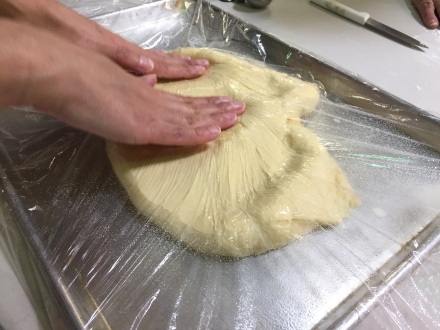
Now add sugar and salt and mix for 5-8 minutes. Conduct the “window pane” test (spread a tiny dough piece with your fingers into a thin translucent layer). If you can see through the layer without it ripping, you are ready to transfer the dough onto a buttered sheet pan and cover it with a plastic wrap.
Let it sit for at least 6 hours, or overnight.
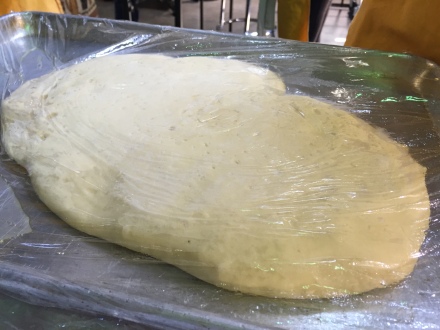
After the dough has rested for at least 6 hour, or overnight, turn the cold dough onto a greased pan. Divide the dough in half. Then press one portion of dough into an even rectangle about 2 inches thick.
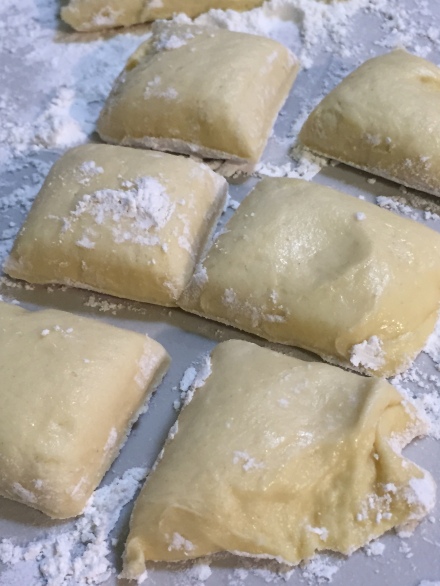
Take the rectangle in half lengthwise and cut it crosswise into 6 equal portions. The recipe makes a total of 12 equal pieces.
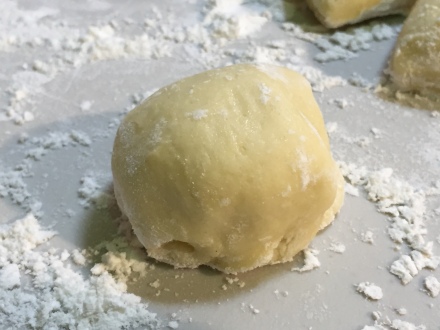
Roll the dough into balls.
You have many option to shape the Brioche (i.e. in a loaf pan) but we made many small ones with little 2-3 balls per baking cup.
Place the Brioches in a pan. Cover the pan loosely with plastic wrap and set them aside for about 45 minutes until the dough has risen to the level of the pan rim.
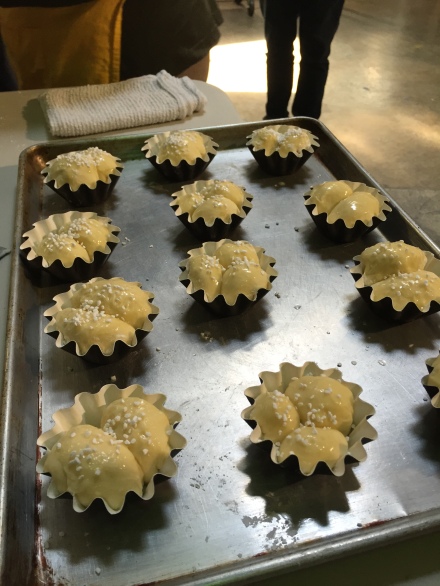
Unwrap the dough, brush them with melted butter and sprinkle with sugar. Bake at 350 degree F for 30 minutes, rotating the after 20 minutes. Reduce the oven temperature to 325 degree F and continue to bake or 25-30 minutes, or until they are golden brown on top.
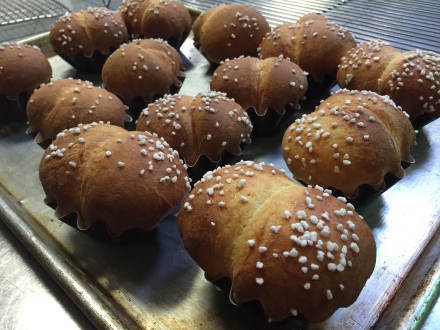
Transfer to cooling rack and let them cool completely.
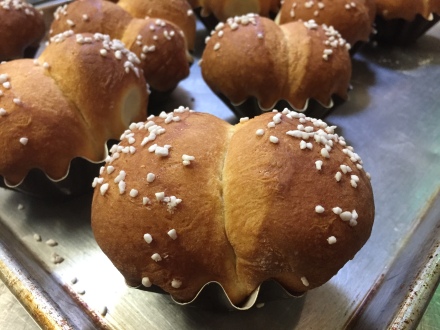
Look at these cute little Brioche! They look like baby’s little bums!
So making Brioche wasn’t as scary as I thought. Yes, there are quite a bit of butter (almost two sticks, to make two 8-1/2 inch loaves) and eggs (three altogether) but it’s not that bad as long as you just eat only one or two of the little ones. It’s difficult to stay disciplined though because these little morsels are lovely, so lovely that you really can’t decide if they are bread or actually pastry.
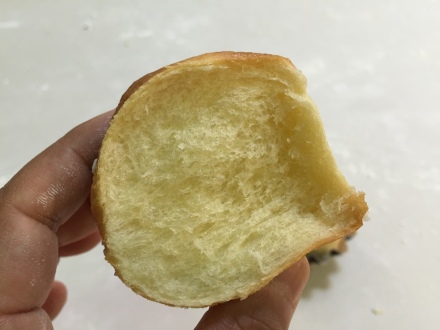
I ate one in class while it was still warm, and another one with a cup of coffee when I got home that afternoon.
Everything about Brioche was a music to my ears … and my tummy.







































